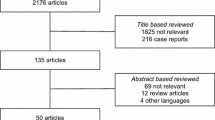Abstract
Objective: To assess the effects of nitroglycerin or urapidil on hemodynamic, respiratory and metabolic parameters in hypertensive patients with pulmonary edema.
Design: Open, randomized and prospective clinical study.
Setting: Out-of-hospital setting and Emergency Department in a 2000-bed hospital.
Patients: Hundred twelve patients with evidence of hypertensive crises with pulmonary edema (systolic blood pressure (SBP) >200 mmHg and/or diastolic blood pressure (DBP) >100 mmHg and rales over both lungs) at the time when the emergency physician arrived.
Interventions: The out-of-hospital treatment consisted of oxygen via face mask, 80 mg furosemide i. v., 10 mg morphium s. c., and either nitroglycerin sublingually (initial dose: 0.8 mg; repetitive administration of 0.8 mg every 10 min to a cumulative dose of 3.2 mg) or urapidil (initial dose: 12.5 mg i.v.; repetitive administration every 15 min to a cumulative dose of 50 mg). If SBP was more than 180 mmHg and/or DBP more than 90 mmHg on admission, antihypertensive treatment was continued with nitroglycerin (0.3–3 mg/h) or urapidil (5–50 mg/h).
Measurements and results: Blood pressure (BP) was measured every 5 min with the use of an automatic oscillometric device. Serum lactate, PO2, pH value, and base excess (BE) were evaluated on admission and 6 h later. Blood pressure, serum lactate and BE on admission were significantly lower (SBP: 155±30 vs 179±33 mmHg; p=0.0002; DBP: 82±17 vs 93±19 mmHg; p=0.001; lactate: 2.2±1.6 vs 3.9±2.7; p=0.0001; BE: −1.9±3.9 vs −4.4±1.7; p=0.0005) and PO2 and pH values were significantly higher in the urapidil group compared to the nitroglycerin group (PO2: 75±25 vs 66±17; p=0.036; pH: 7.33±0.08 vs 7.29±0.09; p=0.042). After 6 h no differences between the two groups were observed.
Conclusion: The more pronounced BP reduction in the urapidil group was associated with an improved respiratory and metabolic situation in hypertensive patients with pulmonary edema. Therefore, urapidil is a valuable alternative to nitroglycerin in patients with pulmonary edema and systemic hypertension.
Similar content being viewed by others
References
Zampaglione B, Pascale B, Marchisio M, et al. (1996) Hypertensive urgencies and emergencies. Prevalence and clinical presentation. Hypertension 27: 144–147
Kikis D, Stieglitz J, Dickenbrock H, Kochen S, König K (1993) The role of the ACE-inhibitors in the therapy of hypertensive crisis with and without pulmonary edema. Intensivmed Notfallmed 30: 65–69
Ingram RH, Braunwald E (1992) Pulmonary edema. Cardiogenic and non-cardiogenic. In: Braunwald E (ed), Heart Disease. Saunders, Philadelphia, pp 551–569
Hirschl MM (1995) Guidelines for the drug treatment of hypertensive crises. Drugs 50: 991–1000
The fifth report of the Joint National Committee on Detection, Evaluation and Treatment of High Blood Pressure (1993) Arch Intern Med 153:154–183
Prisant LM, Carr AA, Hawkins DW (1993) Treating hypertensive emergencies. Controlled reduction of blood pressure and protection of target organs. Postgrad Med 93: 92–96
Kaplan M (1994) Management of hypertensive emergencies. Lancet 344: 1335–1338
Bussmann WD, Kenedi P, Von Mengden HJ (1992) Comparison of nitroglycerin with nifedipine in patients with hypertensive crises or severe hypertension. Clin Investig 70:1085–1088
Bussmann WD, Schupp D (1977) Wirkung von Nitroglyzerin sublingual in der Therapie des klassischen Lungenödems. Dt Med Wschr 102: 335–342
Hirschl MM, Seidler D, Zeiner A, Heinz G, Wagner A, Sterz F, Laggner AN (1993) Intravenous urapidil versus sublingual nifedipine in the treatment of hypertensive urgencies. Am J Emerg Med 11: 653–656
Hirschl MM, Binder M, Bur A, Herkner H, Müllner M, Woisetschläger C, Laggner AN (1997) Safety and efficacy of urapidil and sodium nitroprusside in the treatment of hypertensive emergencies. Intensive Care Med 23: 885–888
Van der Stroom JG, Van Wenzel HB, Vergroesen I, Kal JE, Kooien JJ, Dijkhuis JP, Swaan A, Porsius M, Kleinjans HA, Van Zwieten PA (1996) Comparison of the effects of rapidil and sodium nitroprusside on hemodynamic state, myocardial metabolism and function in patients during coronary artery surgery. Br J Anaesth 76: 645–651
Gross G, Hanft G, Kolassa N (1987) Urapidil and some analogues with hypotensive properties show high affinity for 5-hydroxy-tryptamine (5-HT) binding sites of the 5-HT1A subtype and for alpha 1-adrenoceptor binding sites. Naunyn Schmiedebergs Arch Pharmacol 336:597–601
Späh F, Grosser KD, Thieme G (1990) Acute hemodynamic effects of urapidil and nifedipine in hypertensive urgencies and emergencies. Drugs 40 (Suppl. 4): 58–59
Hussein S, Seifert V (1989) The postoperative treatment of hypertension with urapidil in patients with cerebrovascular aneurysms. Anesth Intensivther Notfallmed 24: 373–376
Wang RY, Chows JS, Chan KH, Pan HY, Wong RP (1984) Acute hemodynamic and myocardial metabolic effects of intravenous urapidil in severe heart failure. Eur Heart J 5: 745–751
Armstrong PW, Armstrong JA, Marks GS (1979) Blood levels after sublingual nitroglycerin. Circulation 59: 585–588
Kirsten R, Nelson K, Steinijans VW, Zech K, Haerlin R (1988) Clinical pharmacokinetics of urapidil. Clin Pharmacokinet 14:129–140
Voelkel NF (1986) Mechanisms of hypoxic pulmonary vasoconstriction. Am Rev Respir Dis 133:1186–1195
Pierpont G, Hale KA, Franciosa JA, Cohn JN (1980) Effects of vasodilators on pulmonary hemodynamics and gas exchange in left ventricular failure. Am Heart J 99: 208–216
Seltzer JL, Doto JB, Jacoby J (1976) Decreased arterial oxygenation during sodium nitroprusside administration for intraoperative hypertension. Anesth Analg 55: 880–881
Chick TW, Kochukoshy KN, Matsumoto S, Leach JK (1978) The effect of nitroglycerin on gas exchange, hemodynamics, and oxygen transport in patients with chronic obstructive pulmonary disease. Am J Med Sci 276:105–111
Adnot S, Radermacher P, Andrivet P, Dubois-Rande JL, Depeyrat A, Lemaire F (1991) Effect of sodium-nitroprusside and urapidil on gas exchange and ventilation-perfusion relationship in patients with congestive heart failure. Eur Respir J 4: 69–75
Van Zwieten PA (1990) Hybrid or multifactorial drugs in antihypertensive treatment. J Hypertens 8: 687–696
Author information
Authors and Affiliations
Rights and permissions
About this article
Cite this article
Schreiber, W., Woisetschläger, C., Binder, M. et al. The nitura study — effect of nitroglycerin or urapidil on hemodynamic, metabolic and respiratory parameters in hypertensive patients with pulmonary edema. Intensive Care Med 24, 557–563 (1998). https://doi.org/10.1007/s001340050615
Received:
Accepted:
Issue Date:
DOI: https://doi.org/10.1007/s001340050615




